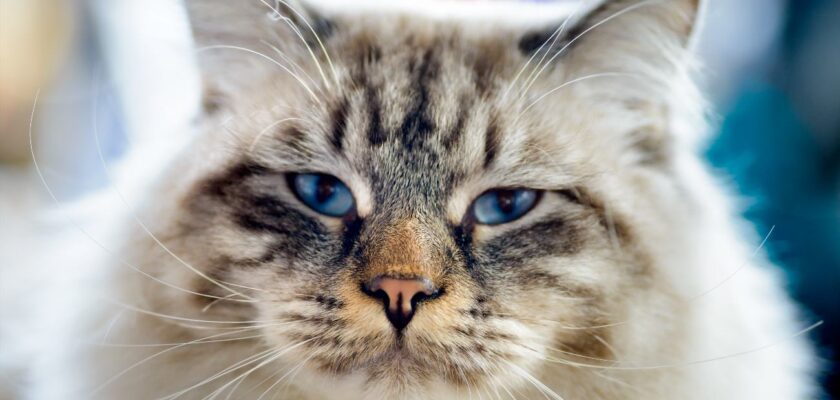What Do Cats See When They Look at Us?
What do cats see? Cats have excellent vision, but they see the world differently than we do. For starters, cats have a much higher visual acuity than humans. This means that they can see details that are much finer than we can.
In addition, cats see in shape rather than color. While this might seem like a disadvantage, shape-based vision actually allows cats to see better in low light conditions. Finally, cats have a wider field of view than humans. While we have to turn our heads to see things that are off to the side, cats can take everything in without moving their head at all.
So what does all this mean for how cats see us? It’s hard to say for sure, but it’s likely that they see us as large shapes with lots of detail. And while we might not look as colorful as they do, we’re still probably pretty interesting to them.
Cats Night Vision: How Do Cats See in the Dark?
Cats are known for their sharp vision, but did you know that they can also see in the dark? Thanks to a few key adaptations, cats have excellent night vision. Cat eyes are much larger in proportion to their head size than human eyes. This allows them to gather more light.
In addition, cats have a reflective layer behind their retina called the tapetum lucidum. This layer helps to reflect any incoming light back through the retina, giving cat eyes a second chance to absorb light.
Finally, cats have peripheral vision that extends up to 200 degrees. This allows them to see objects even when they are not looking directly at them. As a result of these adaptations, cats enjoy superior night vision that helps them to navigate in the dark and capture their prey.
Cat Vision: What Colors Do Cats See?
So, what do cats see? It has long been believed that cats see only in black and white. However, recent studies have shown that cats actually do see color, though not as vividly as humans. Cats are thought to be dichromats, meaning they perceive color using two types of light-sensitive cells in the retina, rather than the three types used by humans.
The two types of cells are responsible for detecting blue and yellow light waves, while red light waves are not detected at all. As a result, cats see colors along a blue-yellow spectrum, with blues appearing very bright and yellows appearing somewhat muted. Reds appear as various shades of gray.
While their color vision is not as sharp as ours, it is still much better than previously thought. Cats also have excellent night vision and can see six times better than humans in low-light conditions. So the next time you see your cat staring off into the distance, they may just be admiring the subtle beauty of the world around them.
How Does a Cat’s Vision Compare to a Human’s? Who Sees Better?
Cats are known for their sharp vision, but what do cats see, and how does feline eyesight compare to our own? In many ways, cats can see better than humans. For starters, cats have a wider field of view. While we have from about 135 to 180-degree fields of view, cats have a whopping 200-degree field of view.
That means they can see almost all the surrounding way without even moving their head! In addition, cats’ eyes are more sensitive to light, allowing them to see in low-light conditions that would leave us in the dark.
Finally, cats’ pupils are elliptical rather than round, which gives them better peripheral vision and helps them spot prey even when it’s not directly in front of them. So next time you’re admiring your cat’s impressive hunting skills, remember that they wouldn’t be possible without feline vision that’s superior to our own.
What Do Cats Use Their Vision for?
Similar Posts:
- Do Cats Have Night Vision And See In The Dark? Cats See The World Differently
- Can Cats See Color? What Colors Cats Can See?
- It Is a Wonderful Gift to See the World in Colors. Do Dogs See Color too? What You Need to Know About the Dog Vision
- Do Dogs Have Night Vision? Do Dogs See in the Dark Better Than Humans?
- Do Dogs See in Black and White? The Science Behind How Dogs Perceive Color
- Differences Between Albino Cats and White Cats. Your Feline Guide
- Black-Footed Cat – Meet the African Feline Who Loves to Hunt and Sadly, Is Vulnerable to Extinction
- The Most Beautiful Brown Cat Breeds: From the York Chocolate to the Havana Brown Cat

